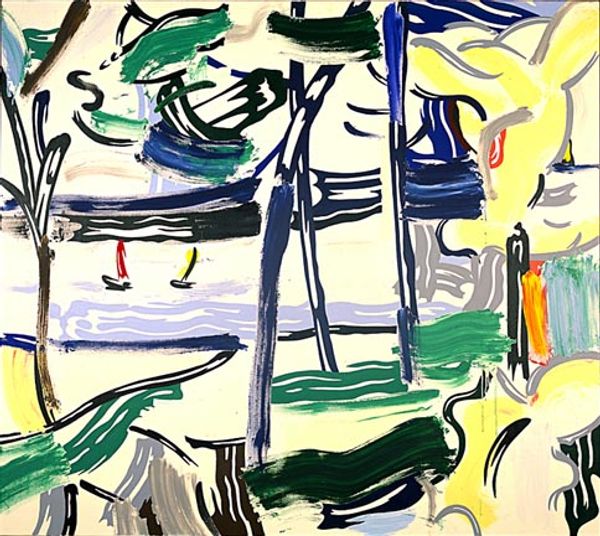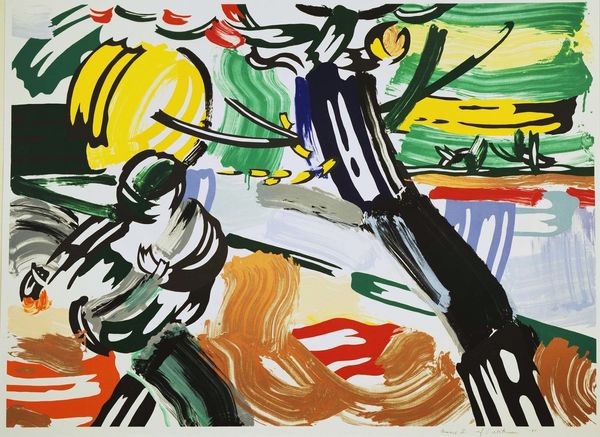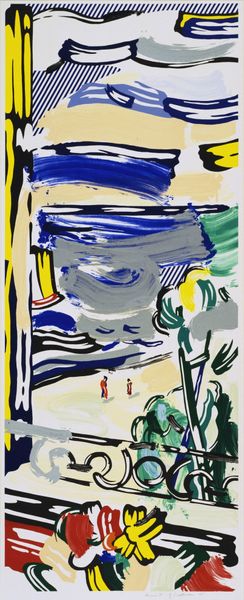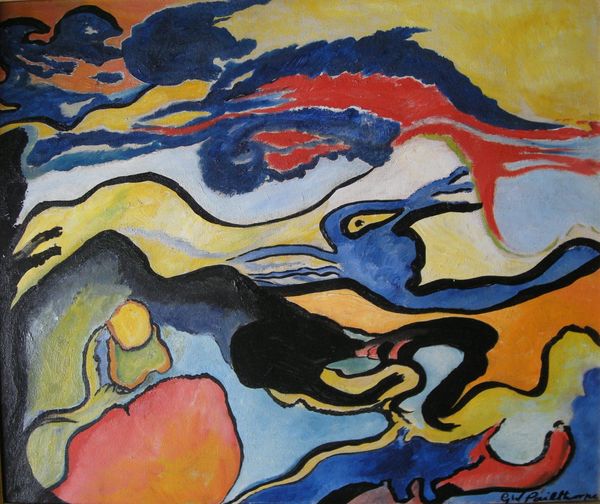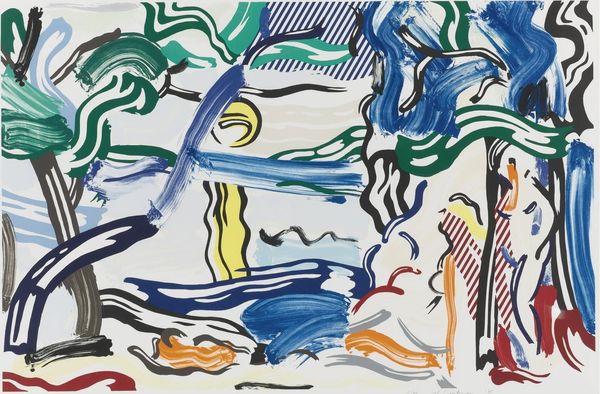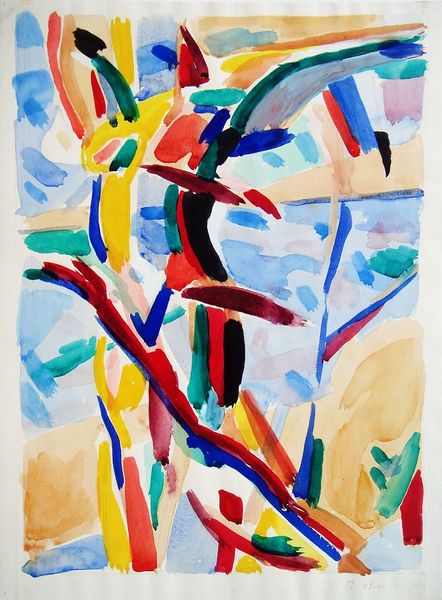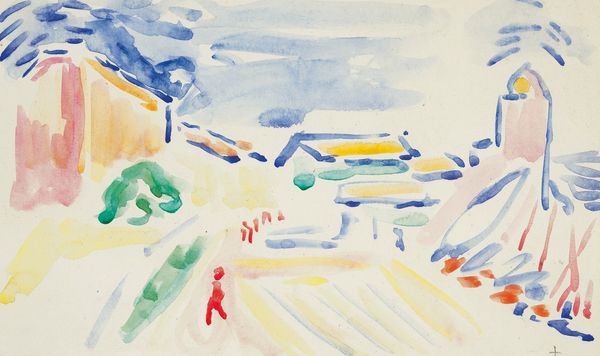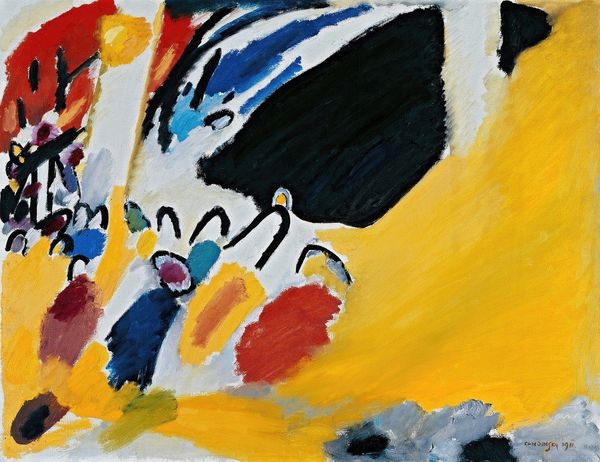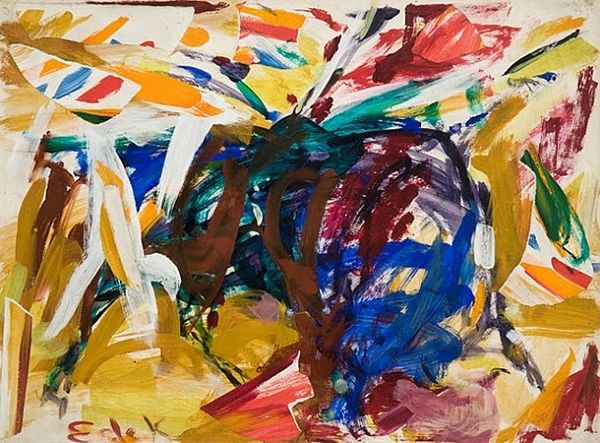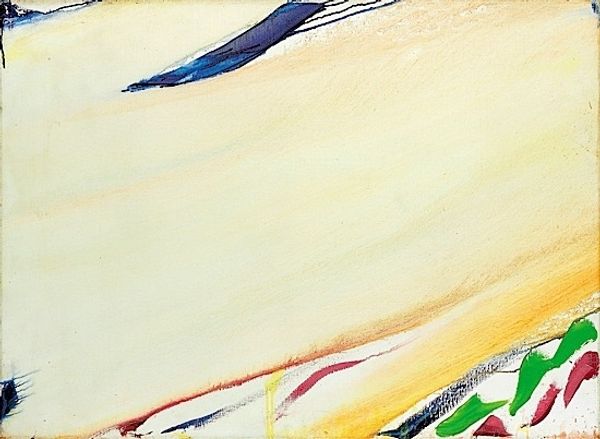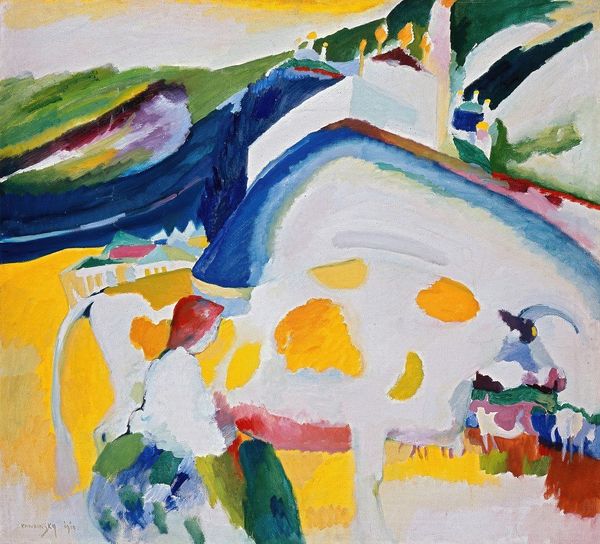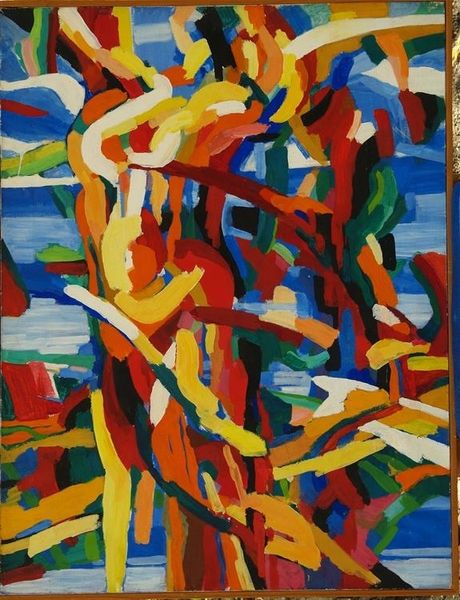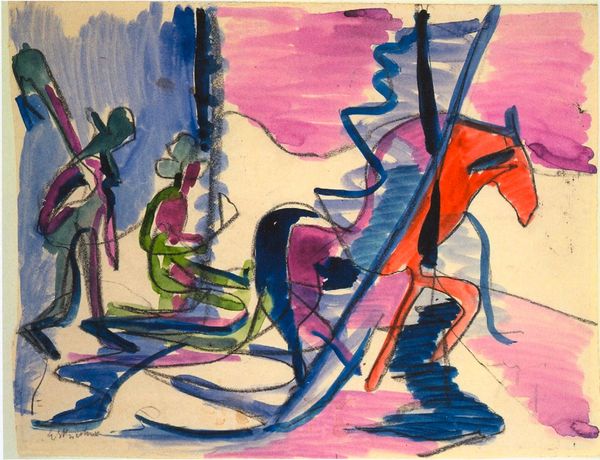
Dimensions: 213.4 x 304.8 cm
Copyright: Roy Lichtenstein,Fair Use
Editor: This is "Coast Village" by Roy Lichtenstein, created in 1987, using acrylic paint. The abstracted houses and landscape, made up of broad strokes, feel both familiar and slightly unsettling. What can you tell me about the way this work was made and what its context might be? Curator: What strikes me immediately is Lichtenstein's strategic use of commercial painting techniques applied to what traditionally would have been a craft tradition. Look at how the Ben-Day dots are replaced by expressive brushstrokes. In many ways, it mocks both high art and low brow labor simultaneously. How does that make you reconsider its place in Pop Art? Editor: So, you're saying the materiality and the process are key to understanding his critique? Is he questioning the role of the artist as a producer, and the value we assign to different kinds of making? Curator: Precisely! Consider the division of labor in commercial art versus the solitary painter in their studio. Lichtenstein bridges and blurs that boundary, elevating mass-produced techniques to the gallery wall, but still insists on the handcrafted application of paint. In this sense, it is more subversive than some of his better-known Pop works. The subject matter suggests a romantic idea of 'coast village', while the mode of production betrays that idealized image. Editor: I see. It is like he's dissecting the industry of art-making itself. It is more about the process than the final product, suggesting artmaking is as valuable as art itself. Curator: Indeed, by drawing attention to these industrial processes, Lichtenstein reveals the inherent contradictions within artistic production, urging us to reflect on our relationship to art and commerce. Editor: That’s a really interesting way to look at it; I never considered the materiality in relation to labor like that before. Thanks for the insight!
Comments
No comments
Be the first to comment and join the conversation on the ultimate creative platform.
